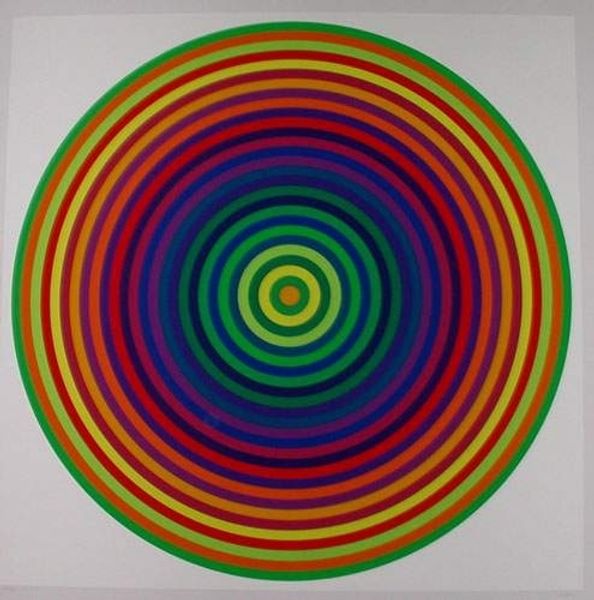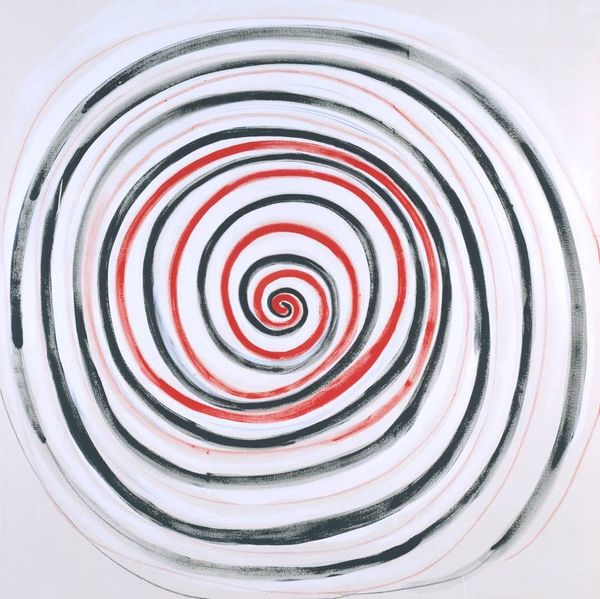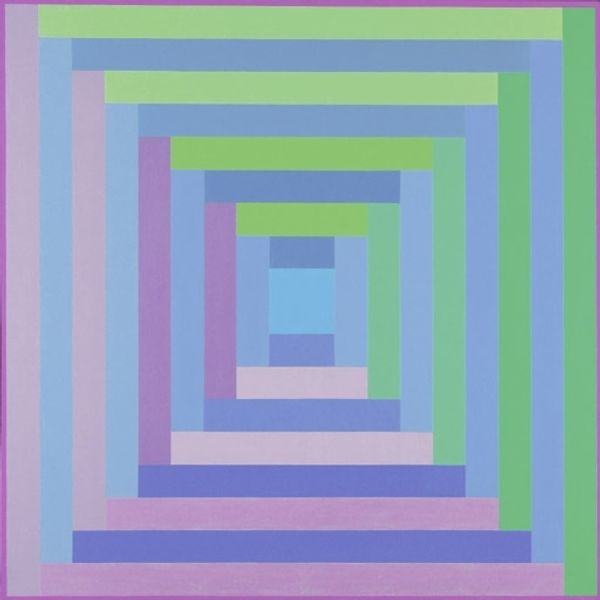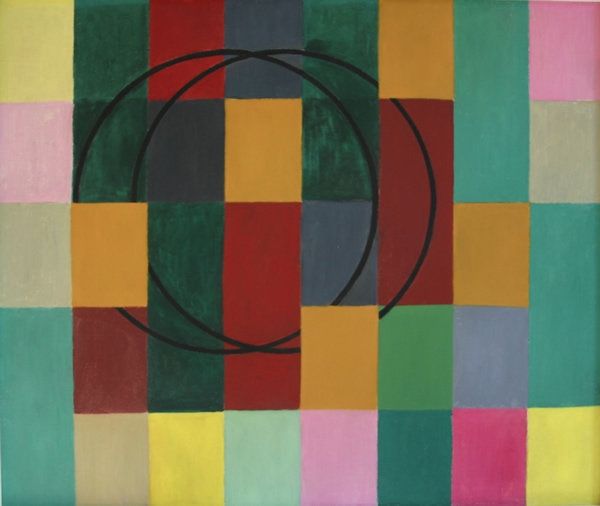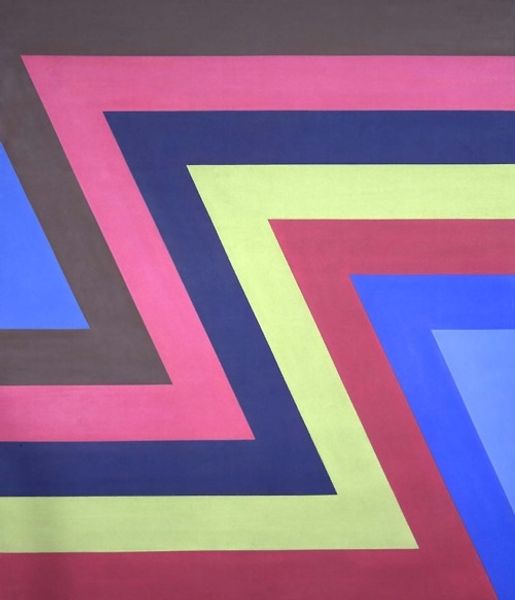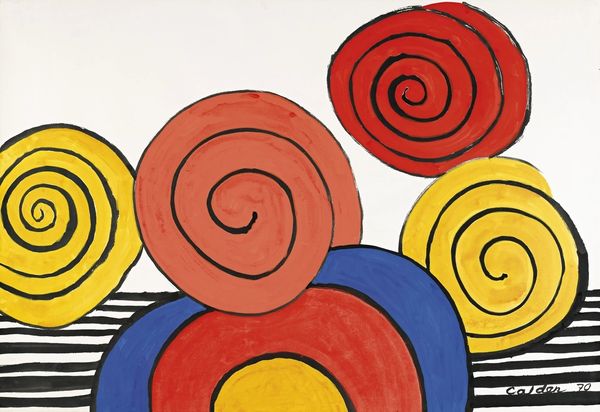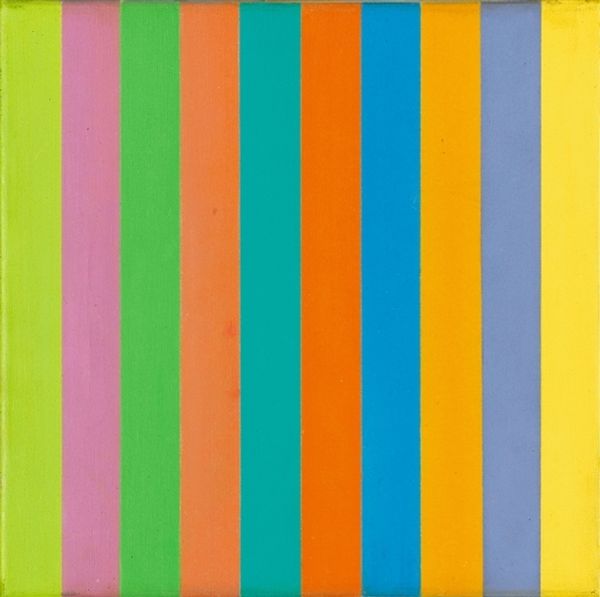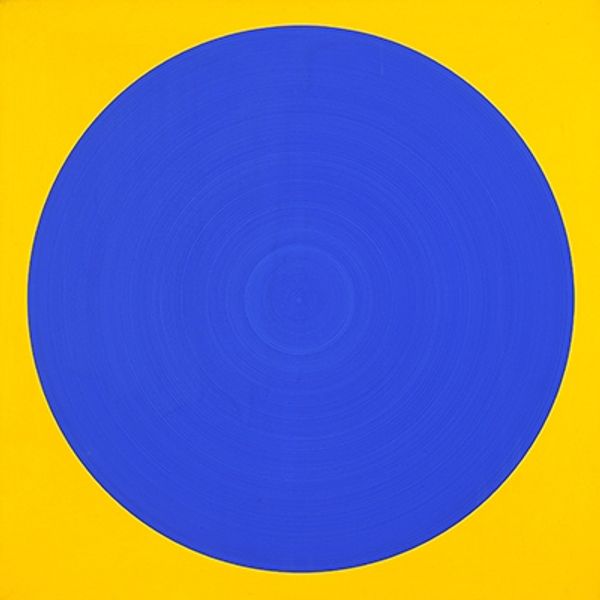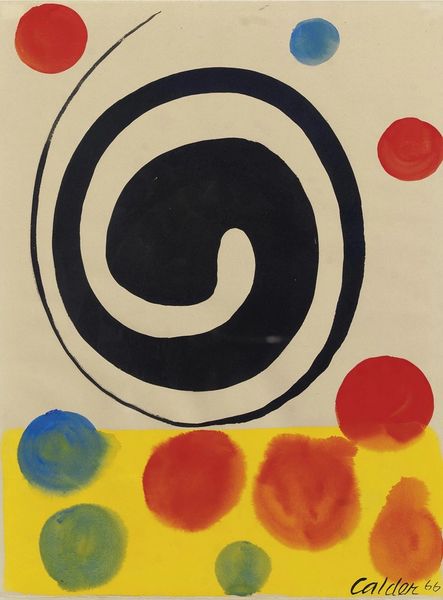
acrylic-paint
#
op-art
#
op art
#
pop art
#
acrylic-paint
#
geometric
#
abstraction
#
pop-art
#
modernism
Copyright: Edna Andrade,Fair Use
Curator: At first glance, Edna Andrade's "Earth Day," created in 1970, gives me a sense of optimistic energy. The interplay of colors is so vibrant. Editor: Indeed. Considering its creation in 1970, at the advent of the environmental movement, the colors of blue and green against the field of yellow absolutely speaks to a renewed hope for the planet’s future. Andrade clearly leverages her grasp of Op Art in order to evoke motion and make this message land with the most impact. Curator: It's an intriguing choice of form for such a weighty concept. How can art, which in some ways seems divorced from everyday life, meaningfully comment on real-world concerns? In its own way, isn't this form of geometric abstraction speaking truth to power? I suppose you would want to explore how this Pop-influenced geometric abstraction may seem removed, but I see this work engaging in conversations about identity, social justice and contemporary activism that resonates on many levels, even today. Editor: That's certainly one interpretation, but I'm thinking about how the societal landscape, specifically political activism of the time, found its expression within visual culture. The initial Earth Day gatherings saw a lot of art incorporated. The spiral may perhaps relate to the concept of exponential change, a common belief in that era. It’s not simply about representation; it's about the role of art in actively shaping perceptions. I wonder about how art intersects with popular consciousness, with protest and dissent, but, overall, about how it gets mobilized towards societal transformation. Curator: I appreciate your attention to historical context. For me, Andrade's decision to visualize an environmental call to action with such a mathematically grounded language presents an interesting tension. By moving towards this geometric abstract vocabulary, she may ask the public to redefine their connection with Earth’s future, as opposed to the political movements which had strong feelings towards social change, maybe too strong for public comfort? The geometric abstract movement here proposes a balanced view of the Earth as well as a balanced path toward change. Editor: Ultimately, viewing "Earth Day" invites us to examine the role art plays in advocating, reflecting, and shaping the trajectory of social and environmental movements. Curator: Yes, reflecting on how we are shaping our environmental future... that´s something to contemplate.
Comments
No comments
Be the first to comment and join the conversation on the ultimate creative platform.

